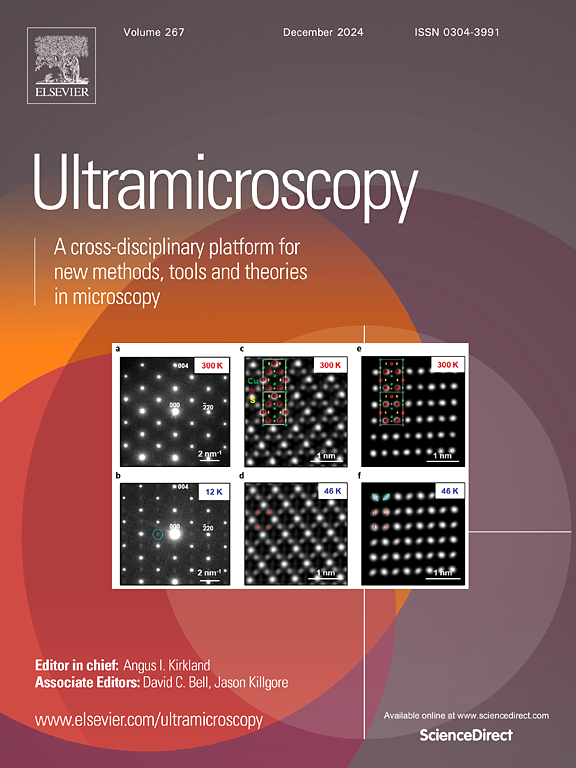Prediction of the morphology of nano particles based solely on atom counting data
IF 2
3区 工程技术
Q2 MICROSCOPY
引用次数: 0
Abstract
The framework to determine the morphology of nano particles from atomically resolved electron microscopy images and atom counting data is introduced. Focus is placed on electron microscopy data avoiding advanced geometry optimization of the particle. The problem is solved by simulated annealing with different fitness functions assessed. Even for small particles the solution space rapidly becomes too large to be exhausted. The concept of site occupation probabilities, , is then used to analyze a subset, typically very few hundred solutions. This is shown to be sufficient to reach a relative error of below 10% for already with 100 solutions allowing to determine with high confidence and low statistical error realistic average shapes also for nano particles of a few thousand atoms. These particles typically exhibit a well defined core covered by a layer of sites that are not occupied in each solution. It is further demonstrated that sites with high probability to contain a vacancy can be identified assuming the presence of a vacancy. If a vacancy is actually present in a particle its position can be identified with rather high fidelity. Finally, it is shown that the procedure can cope with the statistical error or ambiguities inherent in atom counting data based on noisy, low dose electron microscopy images.
仅基于原子计数数据的纳米粒子形态预测
介绍了从原子分辨电子显微镜图像和原子计数数据确定纳米粒子形态的框架。重点放在电子显微镜数据上,避免了粒子的高级几何优化。通过评估不同适应度函数的模拟退火方法解决了该问题。即使对于小颗粒,溶液空间也会迅速变得太大而无法耗尽。然后使用场地占用概率pi的概念来分析一个子集,通常只有很少的几百个解决方案。对于pi>;0.5,这足以达到低于10%的相对误差,已经有100个溶液,可以以高置信度和低统计误差确定几千个原子的纳米颗粒的实际平均形状。这些粒子通常表现出一个定义明确的核,核上覆盖着一层在每种溶液中都不被占据的位点。进一步证明,假设存在空缺,可以确定具有高概率包含空缺的地点。如果一个粒子中确实存在一个空位,那么它的位置就可以相当精确地确定出来。最后,表明该方法可以处理基于噪声、低剂量电子显微镜图像的原子计数数据固有的统计误差或模糊性。
本文章由计算机程序翻译,如有差异,请以英文原文为准。
求助全文
约1分钟内获得全文
求助全文
来源期刊

Ultramicroscopy
工程技术-显微镜技术
CiteScore
4.60
自引率
13.60%
发文量
117
审稿时长
5.3 months
期刊介绍:
Ultramicroscopy is an established journal that provides a forum for the publication of original research papers, invited reviews and rapid communications. The scope of Ultramicroscopy is to describe advances in instrumentation, methods and theory related to all modes of microscopical imaging, diffraction and spectroscopy in the life and physical sciences.
 求助内容:
求助内容: 应助结果提醒方式:
应助结果提醒方式:


